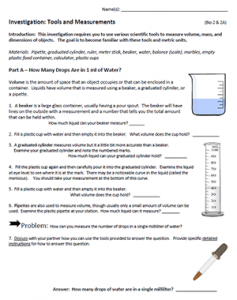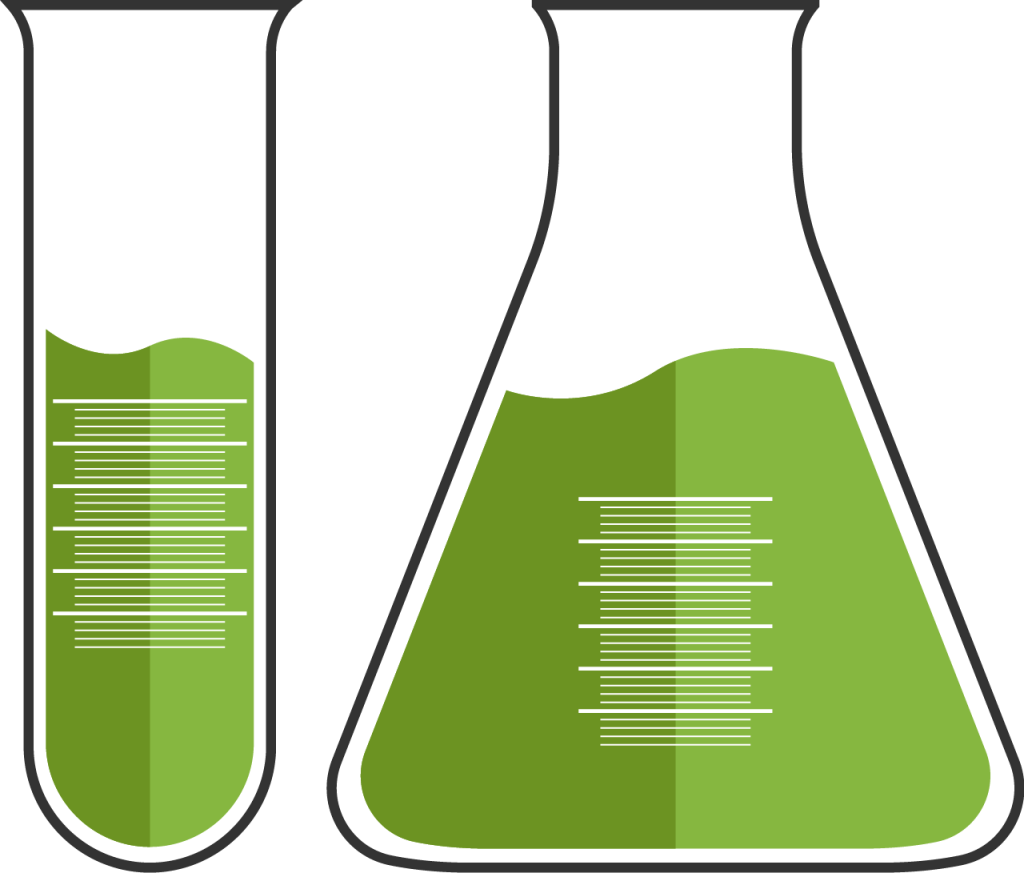
I designed this activity to help students become familiar with basic equipment found in the lab. Students take volume measurements using a graduated cylinder, beaker, and a 3ml pipette.
Ultimately, they must determine how many single drops of water are in 1 milliliter by designing a way to test this given the tools provided. They can either use the 3ml pipette or the graduated cylinder to answer the question.
Students then examine how volume is calculated using a square container (length x width x height) and then comparing that to the amount of fluid can be contained within it by using a beaker.
They will need to develop an explanation for why the numbers are not the same (different units.) Students will also use a water displacement technique to determine the volume of a marble by filling the cylinder to 20 ml, then dropping three marbles into it to see how much the water rises.
Students also learn how to use a balance to determine mass and use a meter stick to measure the heights of objects in the lab. Most students will know how to do these things, but it serves as a good reminder to students to always use the metric system in science.

This is also a good time to discuss the meniscus with students. When liquid is in a graduated cylinder or test tube, the top of the liquid appears to curve. This is due to the cohesion of water. Measurements are taken at the bottom of the curve.
Grade Level: 6-9
Time Required: 45-60 minutes
NGSS 8 Practices: Asking questions (for science), planning and carrying out investigations

